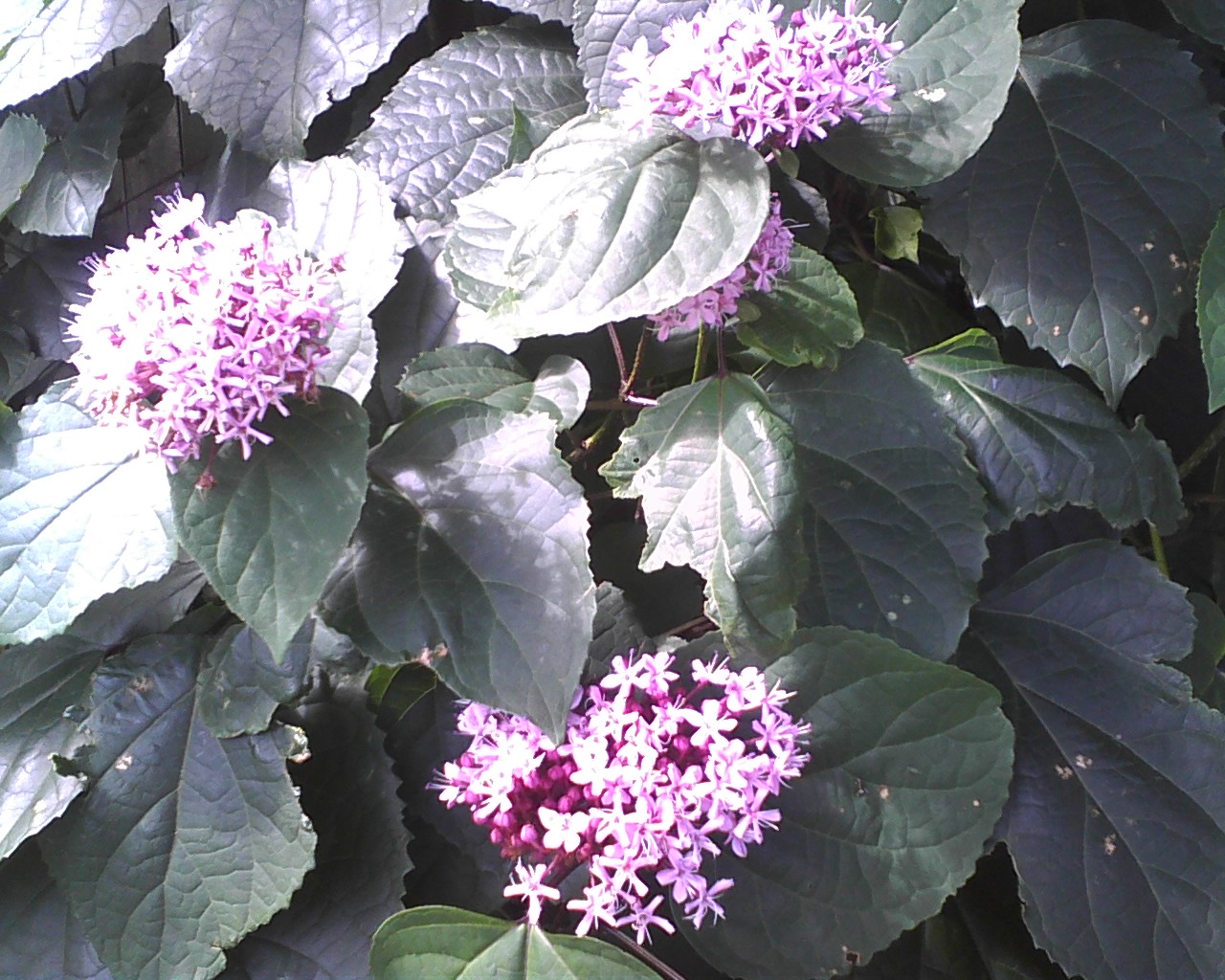Name that plant
Details:
-
Date Photo Taken
06 / 30 / 2013
-
Season Photo Was Taken
Summer
-
Region Photo Was Taken
Southeast
-
City
Atlanta
-
State
Georgia
-
Posted by
scott_north_atl
Notes:
Beautiful pink flower head, large dark green leaves, reddish stems. Possibly a viburnum or hydrangea.



Comments
Joey Belk Russell Unregistered says:
The clerodendrum is the one plant that I know will keep deer away. I planted a row around my garden two years ago an have had great results. They are very invasive but easy to pull out of the ground.
July 29th, 2013 at 2:09pm
Pam KC Unregistered says:
Beautiful flower that starts blooming just as my blue hydrangeas fade. It is invasive. To give you an idea how much, it’s holding it’s own in a bed of Liriope,thank you. The friend who gave it to me calls it”Louisana Butterfly Bush”. I don’t plan on moving it to my new yard in the Ga. Foothills but I know where to get it when I want more;)
July 19th, 2013 at 5:52pm
C.S. Unregistered says:
Definitely clerodendrum. I call it the “peanut butter plant”, as it smells of p.butter when you rub the leaves. Spreads by underground stolens and is invasive, though quite lovely. Deer do not appear to like it. Dies back in winter and returns in spring.
July 19th, 2013 at 3:51pm
Mary Robinson Unregistered says:
Nickname: peanut butter plant. If you rub a leaf between your fingers, you will smell peanut butter. This is very invasive but is pretty when in bloom. It dies back to bare sticks in the fall and regrows from the ground up in the spring. Bloom starts in July. I think a large tub planter might be the answer to keep it in bounds.
July 19th, 2013 at 2:03pm
gardningirl Unregistered says:
pretty, bees love it, but you’ll have hundreds to share in a few years. consistent cutting will get rid of it when that day comes.
July 19th, 2013 at 2:18pm
hortiphoto Master Identifier says:
That’s Clerodendrum bungei. You can see it and other species from this interesting and diverse genus at http://www.botanicalstockphotos.com/cat94.htm .
July 6th, 2013 at 6:04pm